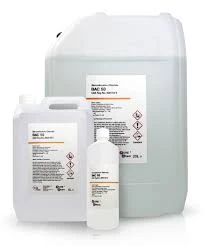Exploring the Potential of HEDP in Phosphonate Applications and Environmental Impact
Understanding the Impact of HEDP on Pitting Corrosion in Heat Exchanger Applications
In the realm of industrial engineering and materials science, the challenge of corrosion is ever-present, especially in systems that involve heat exchangers. One substance that has garnered attention for its corrosion-inhibiting properties is Hydroxyethylidene Diphosphonic Acid (HEDP). This compound is particularly effective in mitigating the risks related to pitting corrosion, a localized form of corrosion that can lead to catastrophic failures if not properly managed.
What is HEDP?
HEDP is a chelating agent that acts to stabilize metal ions and inhibit corrosion through complex formation. Its molecular structure allows it to bind with metal ions, which reduces their reactivity and helps to form a protective layer on the surface of metals. This property makes HEDP particularly suitable for use in water treatment and cooling systems where metal components are susceptible to aggressive aqueous environments.
Mechanism of Pitting Corrosion
Pitting corrosion is characterized by the formation of small holes or pits in the metal surface, often resulting from localized attacks in the presence of chloride ions or other aggressive species. The phenomenon can be exacerbated by factors such as high temperatures, low pH, and the oxygen content in water. When a metal surface becomes compromised, it provides a focal point for corrosion to initiate. The pits can grow rapidly, far outpacing general corrosion, thereby threatening the integrity of heat exchanger systems.
The Role of HEDP in Corrosion Inhibition
hedp ph

Applying HEDP in cooling water systems can dramatically enhance their resistance to pitting corrosion. The chelation process involved with HEDP not only prevents mineral scale formation but also inhibits the aggressive ion interactions that lead to localized corrosion. By maintaining a stable water chemistry, HEDP helps produce a passive film on the metal surface, which serves as a barrier to corrosive agents.
Research has indicated that the use of HEDP can significantly lower the corrosion rates in metals such as carbon steel and copper alloys typically found in heat exchangers. When used in conjunction with other inhibitors, HEDP can provide a synergistic effect, further enhancing product efficacy.
Practical Applications of HEDP
Industries that rely on heat exchangers—such as power generation, petrochemical, and water treatment—have increasingly turned to HEDP as a key component in their corrosion management strategies. It is particularly celebrated in environments where cooling water contains high salinity or aggressive ions, making the conditions ripe for pitting corrosion.
Effective application of HEDP requires careful monitoring of concentration levels to ensure that optimal protection is achieved without impacting the overall system performance. The usual ranges for HEDP concentrations in cooling water systems are typically between 5 to 50 mg/L, depending on the specific operational conditions and metal types involved.
Conclusion
In summary, HEDP presents a viable solution for mitigating the risks of pitting corrosion in heat exchanger applications. Its capacity to inhibit corrosion through chelation not only prolongs the lifespan of metal components but also enhances overall operational efficiency. As industries continue to seek reliable and effective corrosion control measures, the importance of agents like HEDP cannot be overstated. Proper application and monitoring are essential to harness its full potential, ensuring that heat exchangers operate safely and efficiently in challenging environments. As research and technology progress, the role of HEDP in corrosion management is likely to expand, highlighting its significance in modern industrial practices.
-
Water Treatment with Flocculant Water TreatmentNewsJun.12,2025
-
Polymaleic AnhydrideNewsJun.12,2025
-
Polyaspartic AcidNewsJun.12,2025
-
Enhance Industrial Processes with IsothiazolinonesNewsJun.12,2025
-
Enhance Industrial Processes with PBTCA SolutionsNewsJun.12,2025
-
Dodecyldimethylbenzylammonium Chloride SolutionsNewsJun.12,2025





